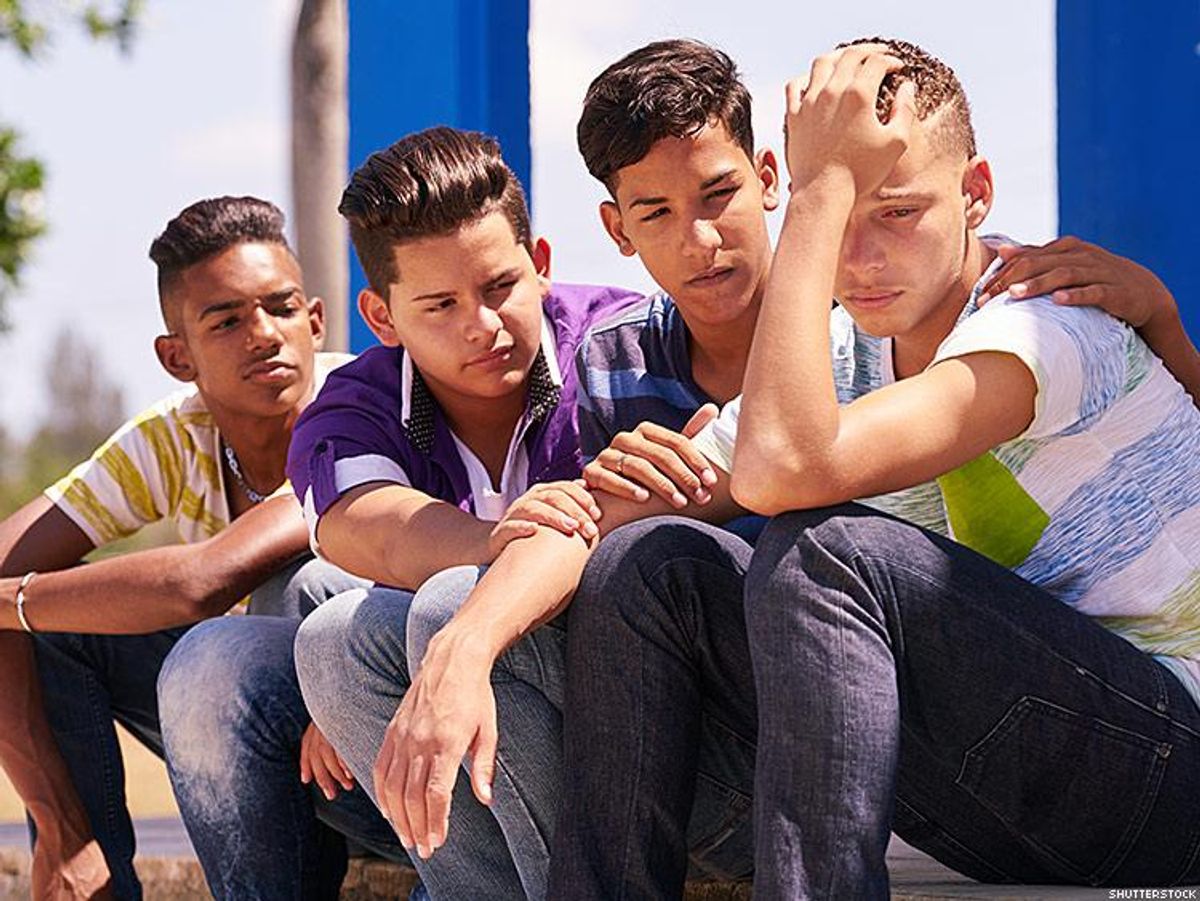As part of the International AIDS Conference in Durban, South Africa, the Centers for Disease Control and Prevention presented a report today analyzing the sexual risk behavior of American males in high school. These risk behaviors included having sex without condoms and having multiple sexual partners. The new study, which compiled data from ninth- through 12th-grade males identifying as gay, bisexual, or heterosexual, found “no significant differences” in the HIV-related risk behaviors between these groups.
But despite the very little difference between the HIV-related risk behaviors of gay youth and that of straight youth, the data show that the rate of HIV transmission is still much higher among men who have sex with men. MSM have an HIV diagnosis rate at 57 times that of heterosexual men. In 2014, for example, MSM represented a full 80 percent of new youth infections.
So why does HIV infection disproportionately affect gay and bisexual men if they don’t engage in risky sexual behavior more often than their heterosexual peers? A huge factor is the increased prevalence of HIV in the sexual networks of gay and bisexual men. And one must also keep in mind that, when it comes to HIV transmission, not all sex acts are created equal. According to Dr. Laura Kann, chief of the CDC’s School-Based Surveillance Branch, MSM are at higher risk because “the transmission risk for receptive anal sex is 17 times higher than [for] vaginal sex.”
Also contributing to this difference is increased drug use among gay and bisexual men, which “compounds their risk for HIV infection.” The study found that young MSM were five times as likely to try injection drugs, with 10 percent reporting having ever tried them. They were also much more likely to have tried heroin, methamphetamines, and cocaine. The use of these drugs — which encourage risky behavior — put them at an increased risk of HIV compared with their heterosexual counterparts.
Dr. Kann said that simply being gay or bisexual can cause stress that may lead to drug use. “Social isolation, stress from self-concealment and coming out — and even hatred that can occur at home or school or within communities — may all contribute to risk,” she told The Advocate. In other words, the act of gay sex is only one factor; simply being gay or bi also increase the risk of infection.
As far as solutions go, the CDC proposes a multipronged approach: increased testing, more comprehensive education, better community support, and continued treatment for those living with HIV. Proper education is paramount. Currently, only 20 states require that their HIV education be medically accurate, and in four states — Alabama, South Carolina, Texas, and Utah — cannot show LGBT orientations in a positive light. If we ever want to create an HIV-free America, our efforts for prevention have to start as early as possible.













































































